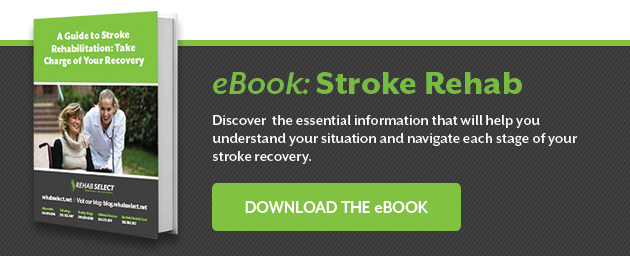
A stroke occurs when a blocked artery (ischemic stroke) or a burst blood vessel (hemorrhagic stroke) interrupts or reduces the blood supply to a part of the brain, causing brain cells to die off. Strokes are a leading cause of long-term disability, often leaving survivors with significant physical challenges.
Physical therapy is critical for helping patients rebuild their strength, restore mobility, and reclaim independence. This article explores the role of physical therapy after stroke, different types of physical therapy for stroke recovery, when to start your treatment, and other stroke therapies to facilitate recovery.
What Does Physical Therapy for Stroke Recovery Entail?
Physical therapy after stroke helps patients regain motor skills, physical function, and movement controls through targeted exercises, mobility training, and specialized techniques. It sets the foundation for relearning to perform daily activities and achieving independence.
Physical therapy for stroke recovery focuses on the following objectives:
- Restore mobility and physical function. Physical therapy helps patients rebuild muscle strength, flexibility, and endurance, enabling them to walk, climb stairs, and perform other essential movements.
- Reduce the risks of complications. Physical therapy after stroke uses stretching exercises, range-of-motion activities, and other interventions to prevent or mitigate complications like muscle stiffness and joint contractures.
- Improve balance and coordination. Physical therapy incorporates balance training and weight-shifting exercises to help patients regain stability and reduce the risk of falls and injuries.
- Enhance quality of life. Restoring patients’ ability to perform daily tasks and regain independence helps improve their mental health and self-esteem.
Types of Physical Therapy for Stroke Recovery
Physical therapy after stroke takes a diverse approach to target various aspects (e.g., physical, neurological, and functional recovery) and each patient's unique challenges to achieve the best outcomes.
Mobility and gait training restores the ability to walk. A therapist may use parallel bars or treadmills to help a patient relearn walking skills and introduce walking aids to support recovery. Meanwhile, strength and flexibility exercises rebuild power and endurance while addressing stiffness to lower the risk of contractures.
Physical therapists often use balance and coordination exercises to help patients minimize the risk of falls. They also incorporate functional retraining to guide patients to practice essential daily activities, facilitating their return to normal life based on their lifestyle needs and recovery goals.
Common Tools and Techniques for Physical Therapy After Stroke
Physical therapy for stroke recovery has evolved significantly. Advanced tools and techniques have helped make stroke therapies more engaging and effective.
Therapists use treadmills with harness systems to provide added support, balance boards to improve stability and core strength, and parallel bars to help patients practice standing, walking, and weight shifting.
They may employ robotic-assisted therapy to guide the affected limbs through specific movements, promoting muscle reactivation and neuroplasticity. Exoskeletons or wearable robotic devices support mobility, enabling patients to walk at early recovery stages.
Immersive virtual reality (VR) technology simulates real-world activities, helping patients practice functional tasks. Meanwhile, therapeutic gaming (e.g., interactive video games or motion-sensing technology) makes repetitive motor skill training exercises more engaging while providing real-time feedback to track progress.
Additionally, therapists may use electrical stimulation technology to activate muscles. For example, Functional Electrical Stimulation (FES) helps promote strength and movement, while Neuromuscular Electrical Stimulation (NMES) can improve motor control and reduce spasticity in weakened or paralyzed muscles.
When to Start Physical Therapy After Stroke
The timing of physical therapy after stroke influences how much a patient may regain their mobility and independence.
Most patients should start physical therapy 24 to 48 hours after a stroke once they’re medically stable. Early interventions include passive range-of-motion exercises to prevent joint stiffness and assisted movements to maintain circulation and muscle function. Additionally, positioning techniques help reduce the risk of bedsores and contractures.
Once patients transition to a rehabilitation facility or outpatient/home-based therapy, they will follow the guidance of a physical therapist to practice various exercises according to their treatment plans, personalized based on their progress, ability, and recovery goals.
Early intervention is critical for promoting neuroplasticity, the key to relearning essential skills. It also prevents complications such as muscle atrophy, spasticity, or joint contractures. The treatment plan must consider the patient’s overall health, stroke severity, and readiness to engage in physical activity.
Improving Outcomes With a Combination of Stroke Therapies
Physical therapy often works in tandem with other stroke therapies to accelerate recovery and improve outcomes. A reputable rehabilitation facility employs a multidisciplinary approach, incorporating modalities like speech therapy, occupational therapy, and psychological counseling to provide a holistic recovery plan.
Occupational therapy interventions for stroke complement physical therapy by helping patients apply the skills they’ve regained to perform daily tasks and participate in meaningful activities. While physical therapy primarily addresses mobility and physical function, occupational therapy emphasizes their practical application to daily life.
For example, physical therapy restores strength, mobility, and coordination, while occupational therapy builds on them to help patients perform tasks like dressing, cooking, eating, or grooming. Physical therapy targets gross motor movements, and occupational therapy refines them to make tasks like writing, picking up small objects, or tying shoelaces possible.
Physical therapy aims to restore physical function to its maximum potential. Occupational therapy interventions for stroke also involve introducing adaptive strategies and tools to help patients navigate daily life despite physical limitations. Therefore, combining these stroke therapies is essential for optimizing long-term outcomes.
Accessing Comprehensive Stroke Therapies in Alabama
Physical therapy after stroke is essential for helping patients regain mobility and independence. A trusted rehab facility provides personalized treatment plans that combine various stroke therapies to maximize treatment outcomes.
Rehab Select’s five state-of-the-art facilities at Alabaster, Talladega, Montgomery, Albertville, and Guntersville give you access to therapists experienced in stroke rehabilitation. Our professional team combines various modalities and technologies to tailor treatment plans for each patient to support fast recovery.
Learn more about our stroke rehabilitation services and schedule a tour at a location most convenient for you to start your rehab journey.





